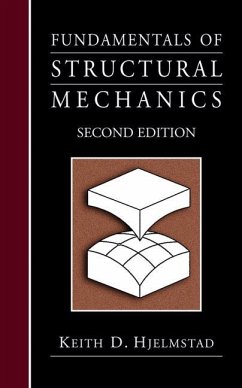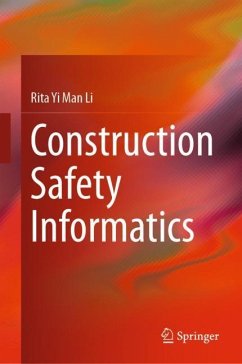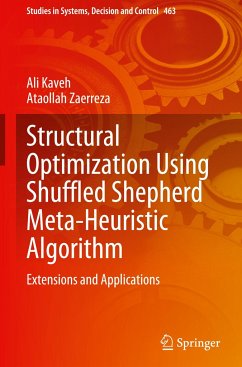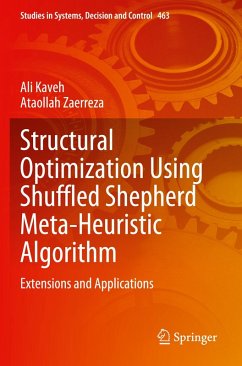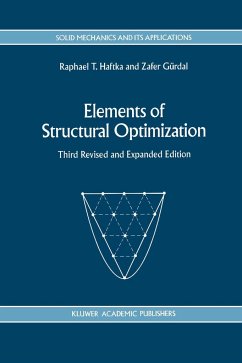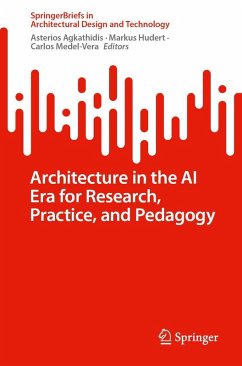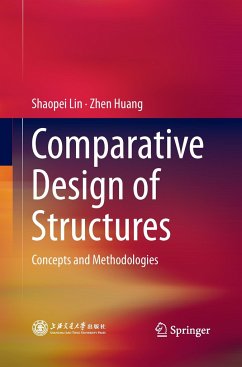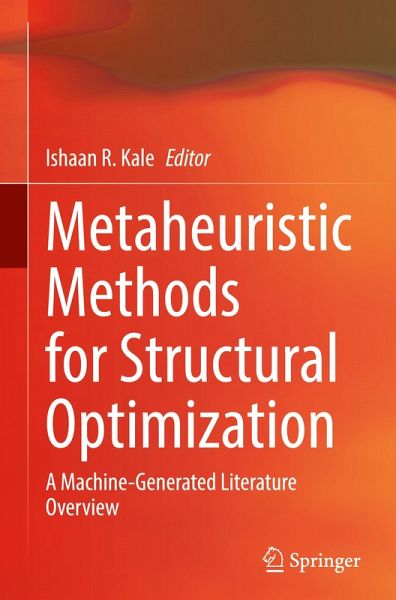
Metaheuristic Methods for Structural Optimization
A Machine-Generated Literature Overview
Herausgegeben: Kale, Ishaan R.

PAYBACK Punkte
84 °P sammeln!
This book presents the result of an innovative challenge, to create a systematic literature overview driven by machine-generated content. This machine-generated volume, with chapter introductions by the human expert, of summaries of the existing studies furthers our understanding of the heuristic and metaheuristic optimization methods for structural engineering domain problems. It brings out nature inspired metaheuristic optimization methods such as Genetic Algorithm, Particle Swarm Optimization, Ant Colony Optimization, Cohort Intelligence, Firefly Algorithm, Differential Evolution, Bee Colon...
This book presents the result of an innovative challenge, to create a systematic literature overview driven by machine-generated content. This machine-generated volume, with chapter introductions by the human expert, of summaries of the existing studies furthers our understanding of the heuristic and metaheuristic optimization methods for structural engineering domain problems. It brings out nature inspired metaheuristic optimization methods such as Genetic Algorithm, Particle Swarm Optimization, Ant Colony Optimization, Cohort Intelligence, Firefly Algorithm, Differential Evolution, Bee Colony, Grey Wolf Optimizer, League Championship Algorithm, Harmony Search Algorithm, Water Cycle Algorithm, Neural Network Algorithm, and its different variations that have been widely used to solve structural engineering problems.
This book will be helpful for academicians and researchers in many kinds such as surveys of nature inspired optimization algorithms for structural optimization, its applicability for solving single objective and multi-objective structural engineering problems, constraint handling, solution quality, challenges, opportunities, key features, and limitations.
Questions and related keywords were prepared for the machine to query, discover, collate and structure by Artificial Intelligence (AI) clustering. The AI-based approach seemed especially suitable to provide an innovative perspective as the topics are indeed both complex, interdisciplinary and multidisciplinary. Springer Nature has published much on these topics in its journals over the years, so the challenge was for the machine to identify the most relevant content and present it in a structured way that the reader would find useful. The automatically generated literature summaries in this book are intended as a springboard to further discoverability. They are particularly useful to readers with limited time, looking to learn more about the subject quickly and especially if they are new to the topics. Springer Nature seeks to support anyone who needs a fast and effective start in their content discovery journey, from the undergraduate student exploring interdisciplinary content to Master- or PhD-thesis developing research questions, to the practitioner seeking support materials, this book can serve as an inspiration, to name a few examples.
It is important to us as a publisher to make advances in technology easily accessible to our authors and find new ways of AI-based author services that allow human-machine interaction to generate readable, usable, collated, research content.
This book will be helpful for academicians and researchers in many kinds such as surveys of nature inspired optimization algorithms for structural optimization, its applicability for solving single objective and multi-objective structural engineering problems, constraint handling, solution quality, challenges, opportunities, key features, and limitations.
Questions and related keywords were prepared for the machine to query, discover, collate and structure by Artificial Intelligence (AI) clustering. The AI-based approach seemed especially suitable to provide an innovative perspective as the topics are indeed both complex, interdisciplinary and multidisciplinary. Springer Nature has published much on these topics in its journals over the years, so the challenge was for the machine to identify the most relevant content and present it in a structured way that the reader would find useful. The automatically generated literature summaries in this book are intended as a springboard to further discoverability. They are particularly useful to readers with limited time, looking to learn more about the subject quickly and especially if they are new to the topics. Springer Nature seeks to support anyone who needs a fast and effective start in their content discovery journey, from the undergraduate student exploring interdisciplinary content to Master- or PhD-thesis developing research questions, to the practitioner seeking support materials, this book can serve as an inspiration, to name a few examples.
It is important to us as a publisher to make advances in technology easily accessible to our authors and find new ways of AI-based author services that allow human-machine interaction to generate readable, usable, collated, research content.




